Charles E W Bean, Diaries, AWM38 3DRL 606/105/1 - April 1918 - Part 1
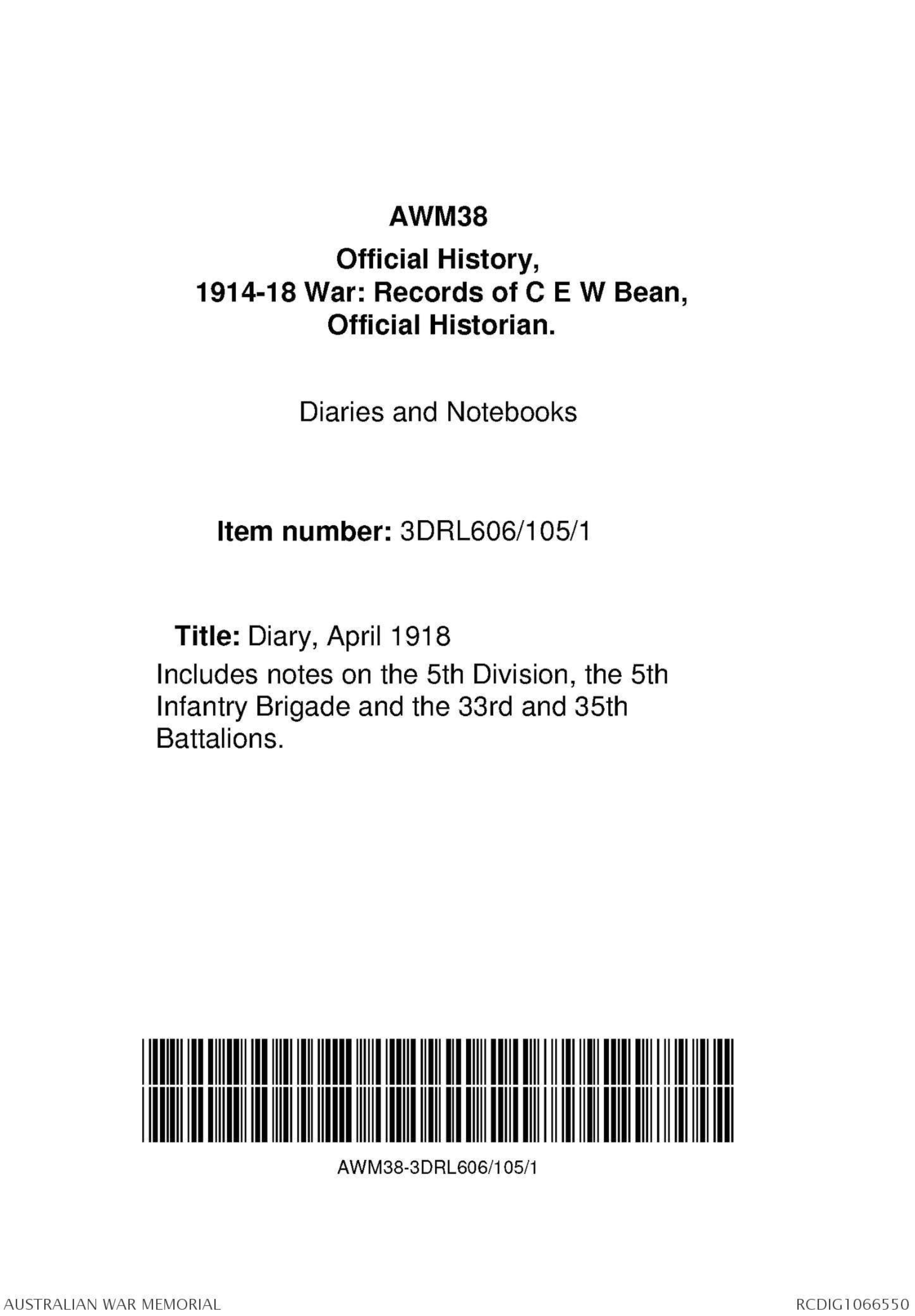
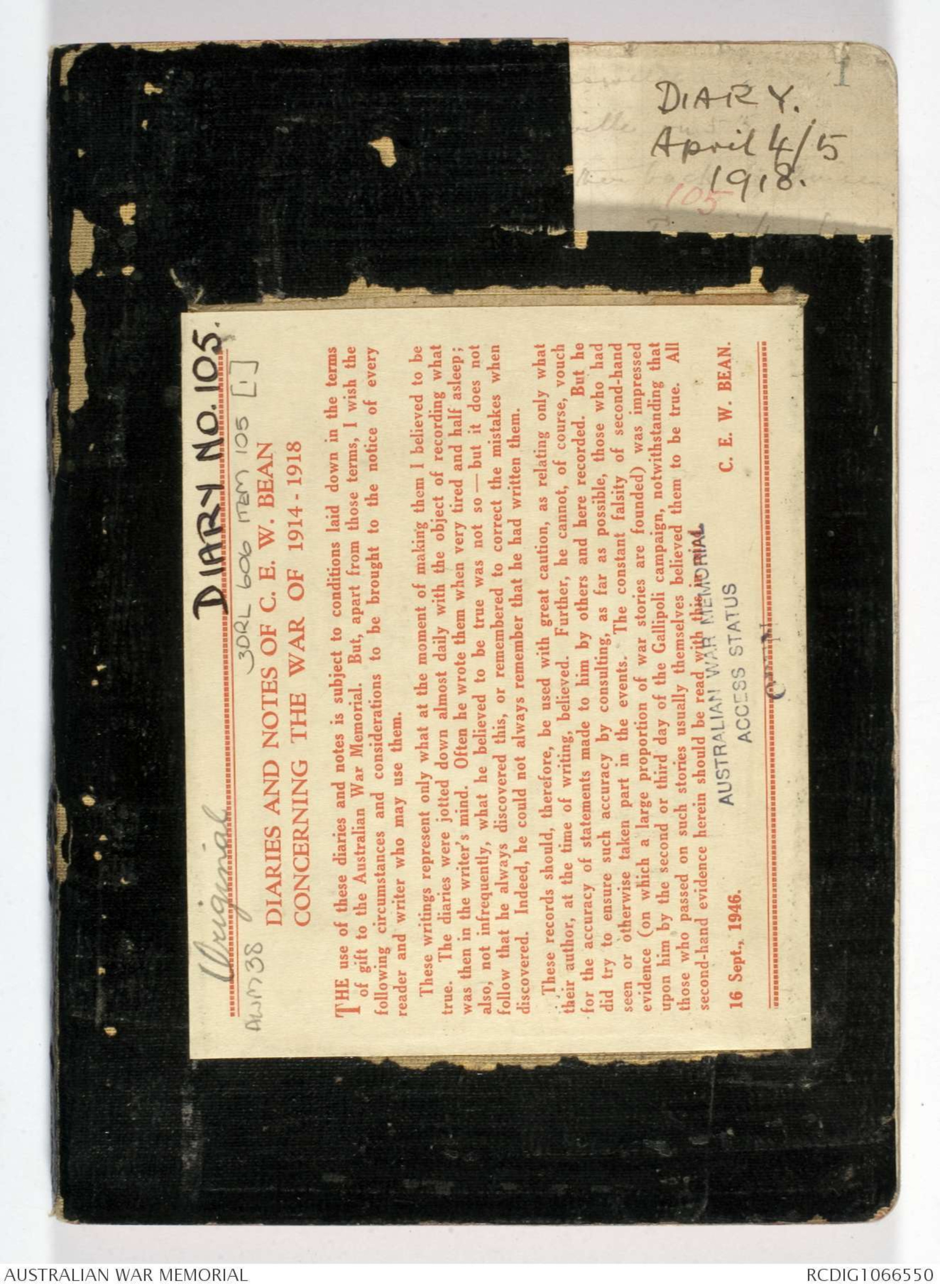
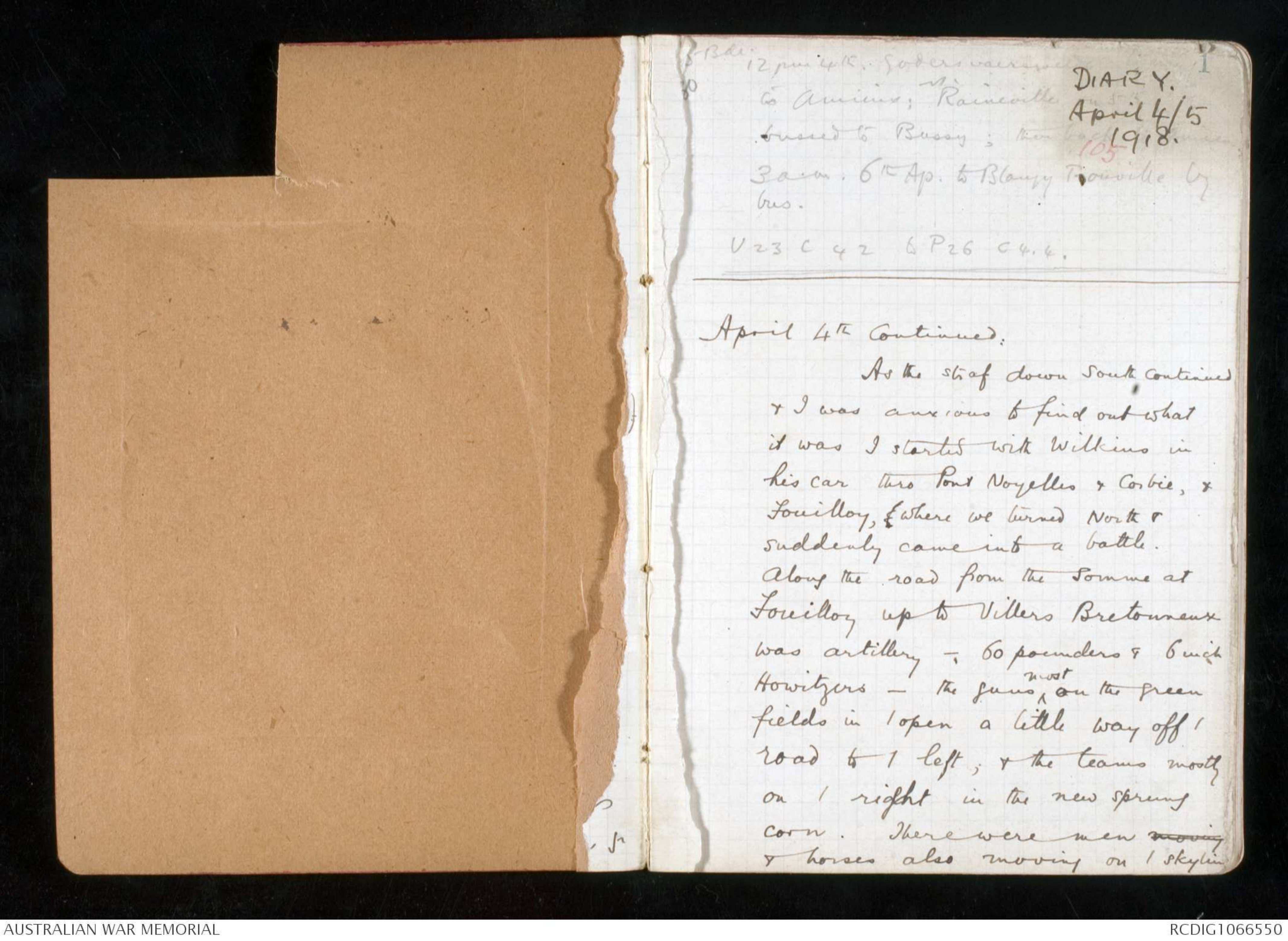
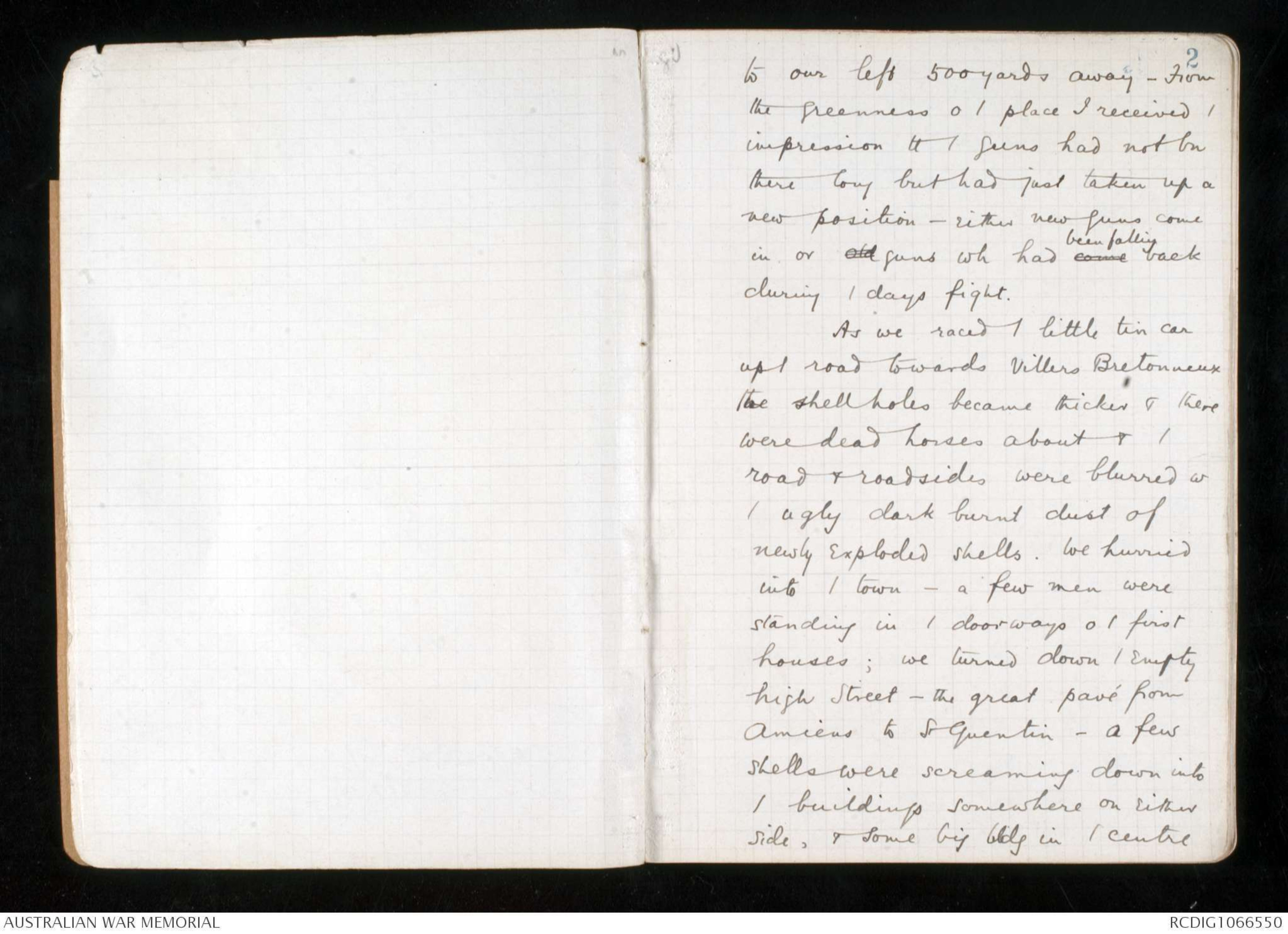
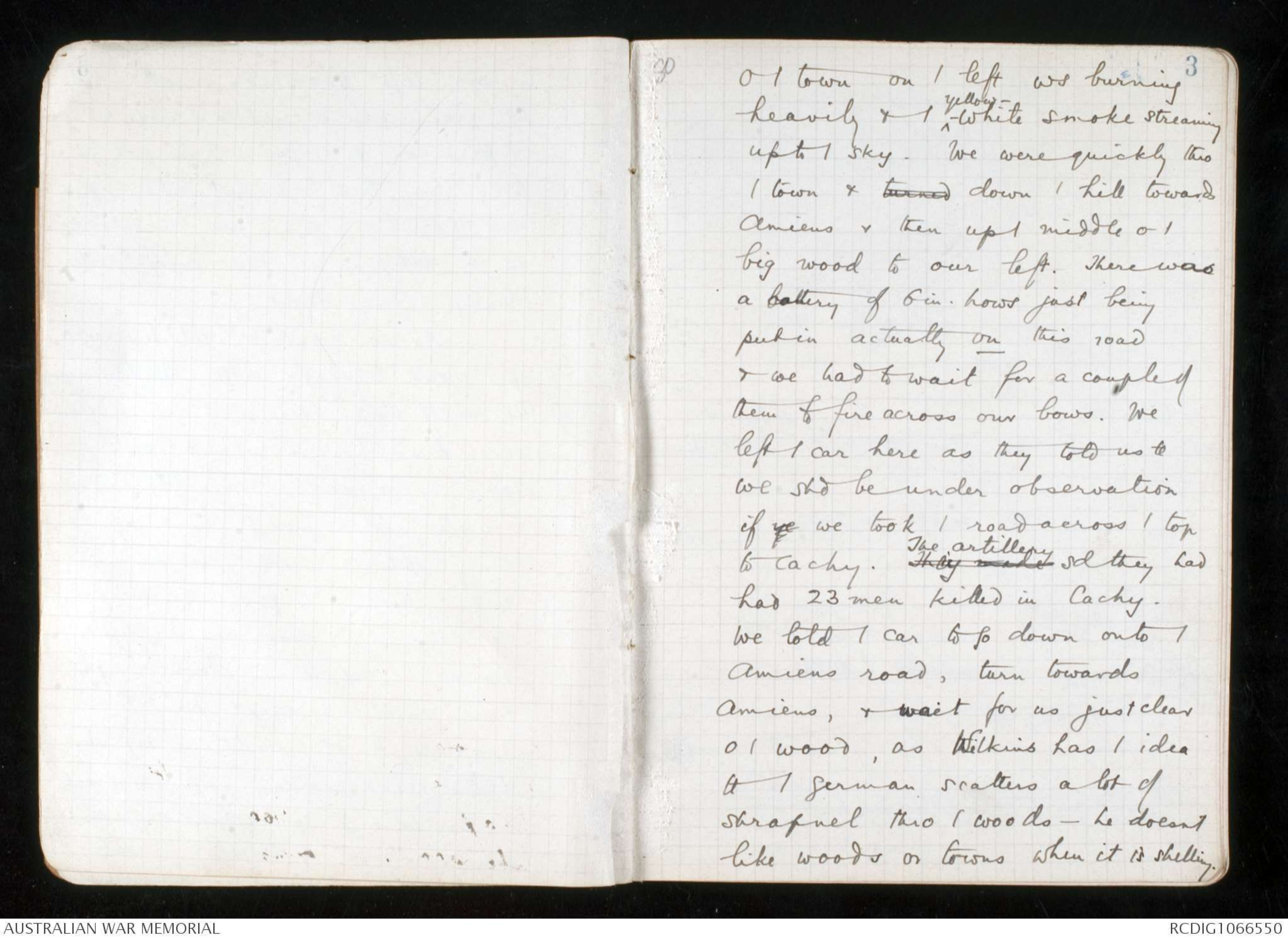
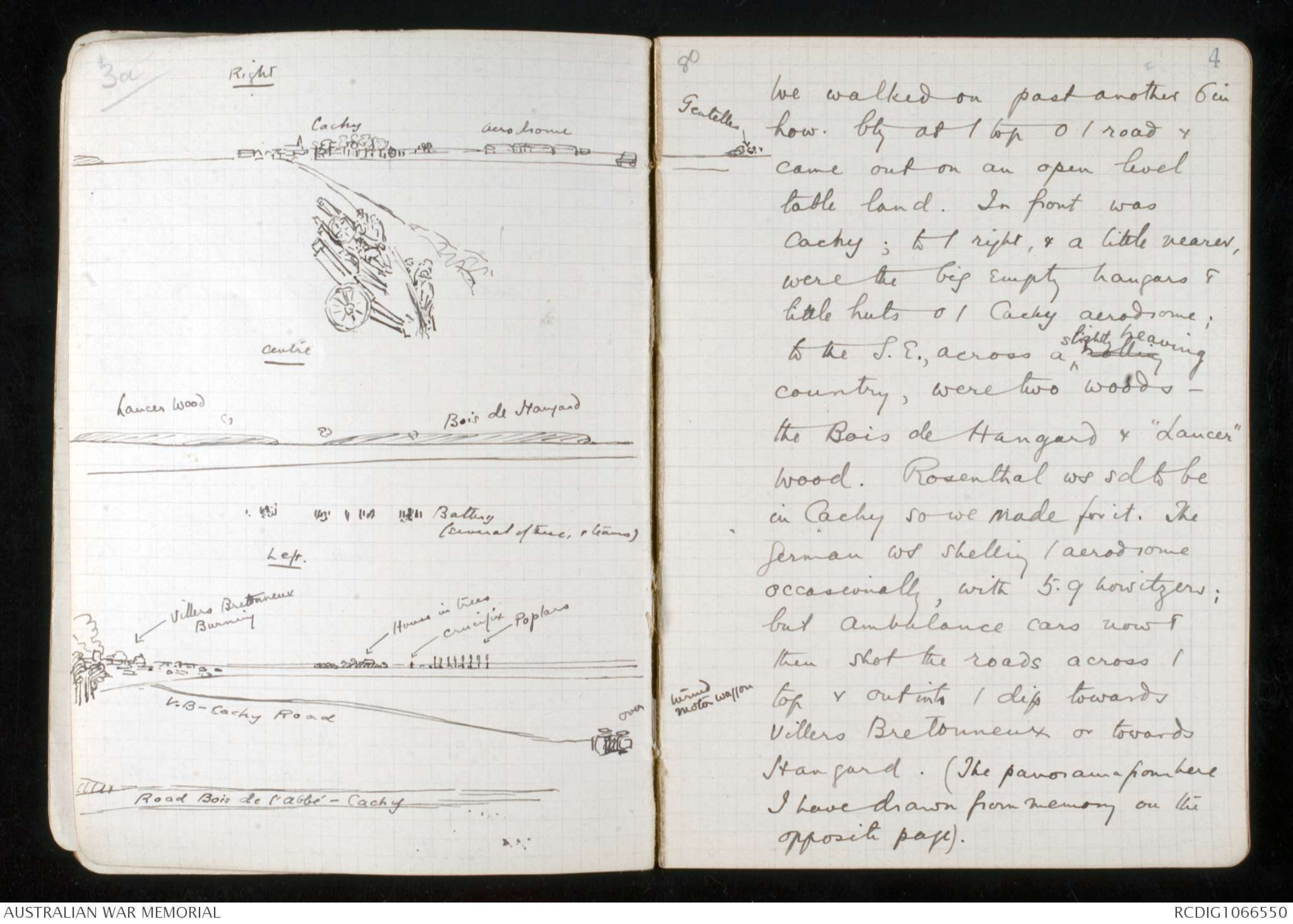
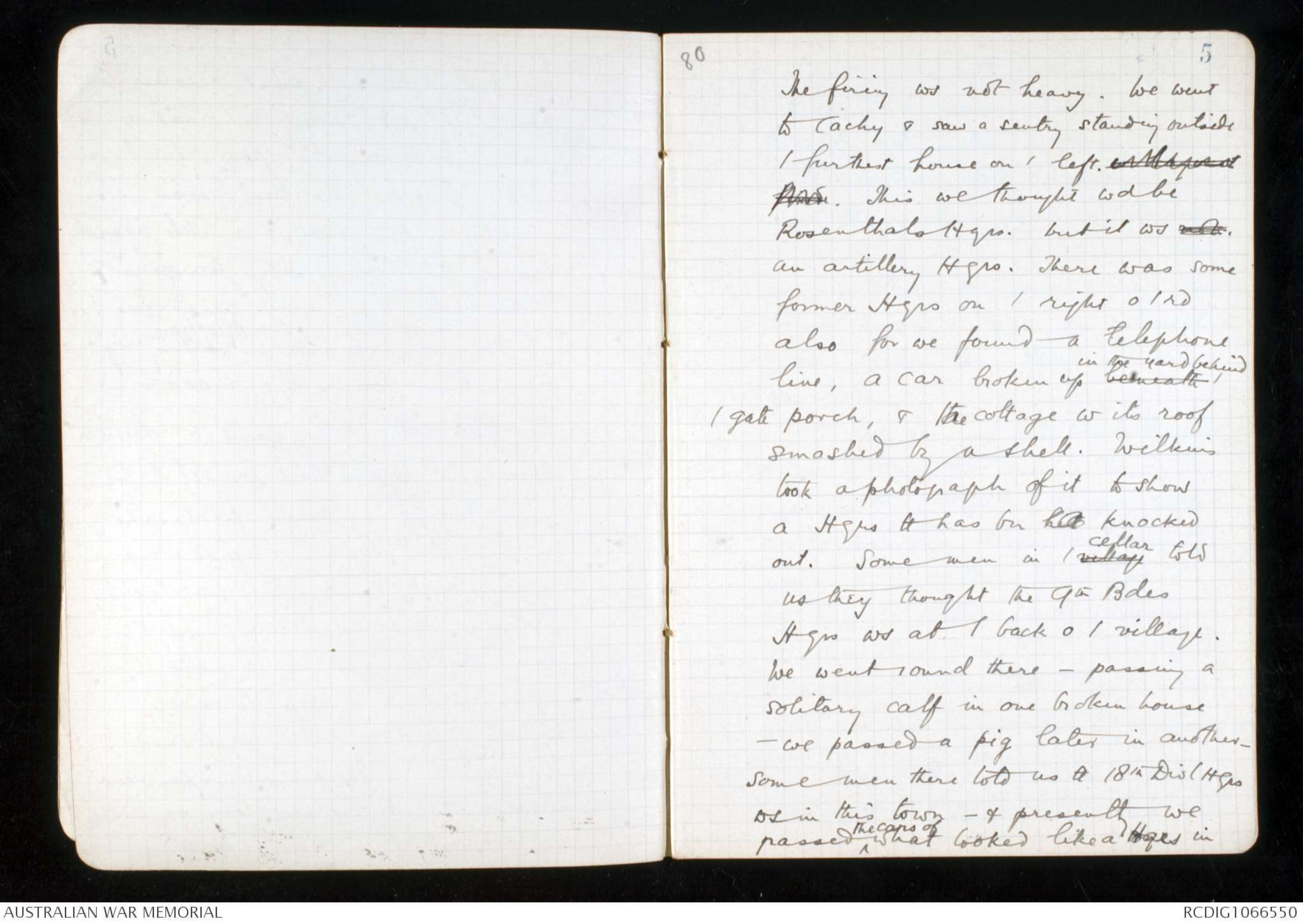
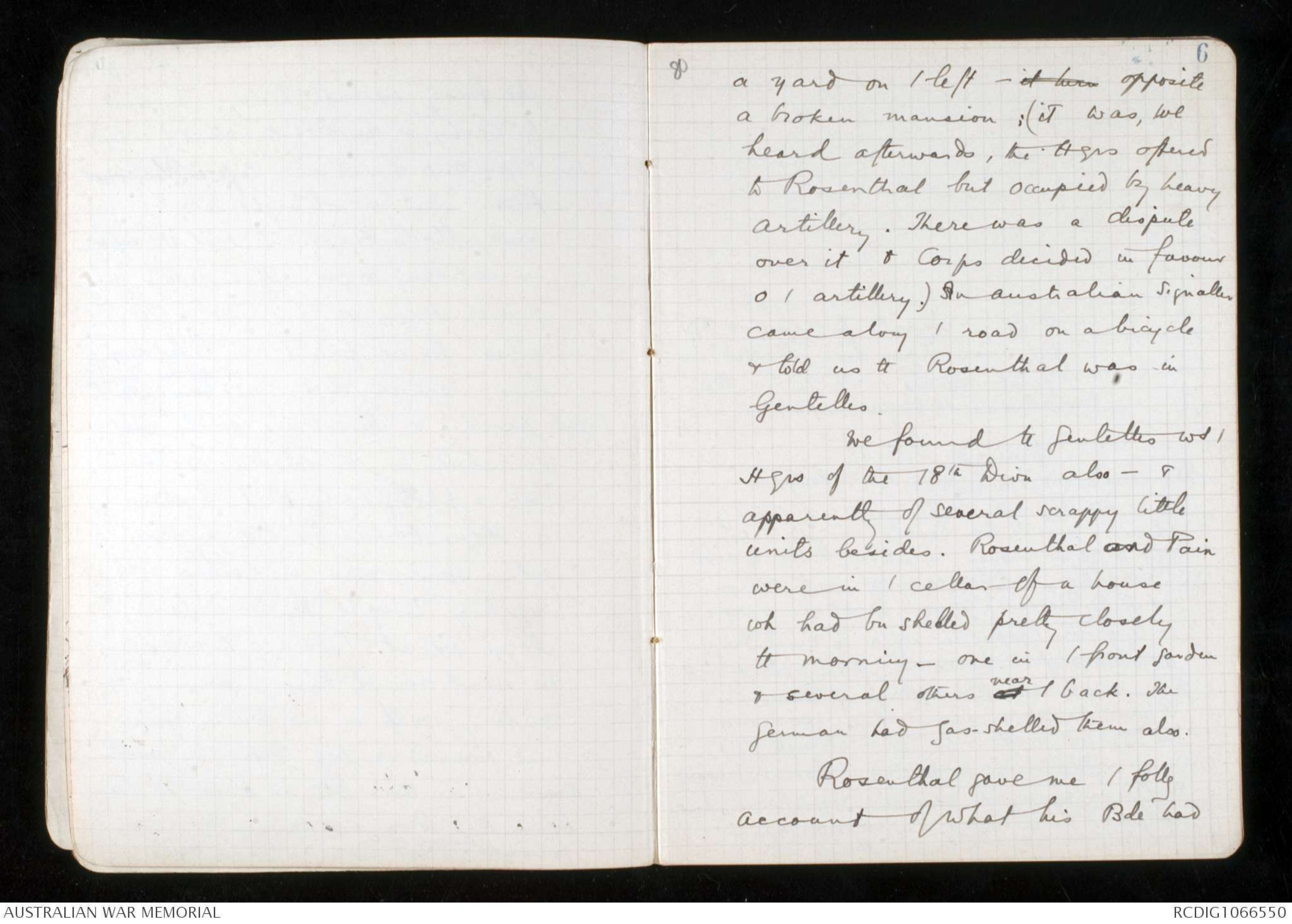
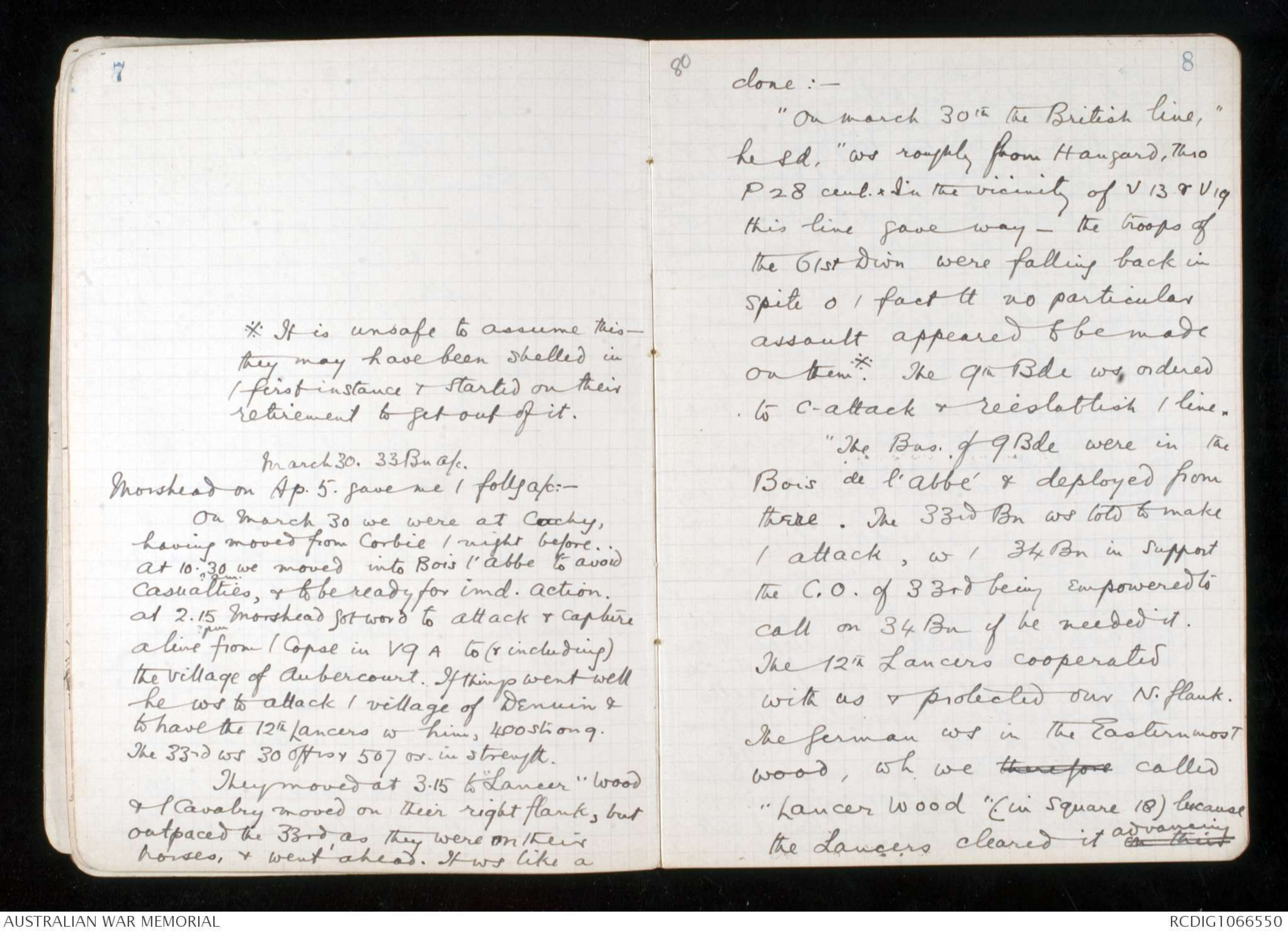
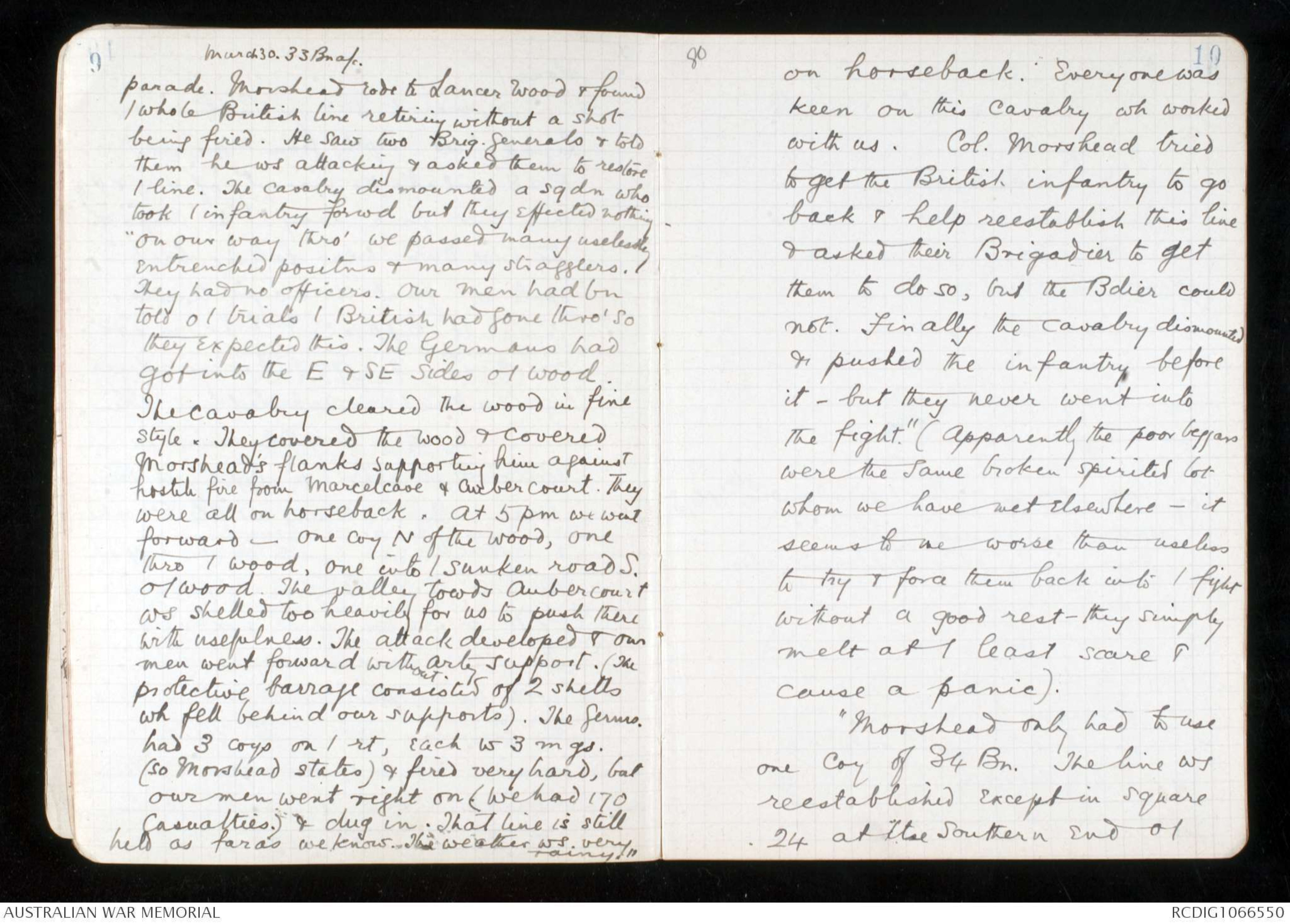
AWM38
Official History,
1914-18 War: Records of C E W Bean,
Official Historian.
Diaries and Notebooks
Item number: 3DRL606/105/1
Title: Diary, April 1918
Includes notes on the 5th Division, the 5th
Infantry Brigade and the 33rd and 35th
Battalions.
AWM38-3DRL606/105/1
DIARY.
April 4/5
1918.
105
Original DIARY NO. 105.
AWM38 3DRL 606 ITEM 105 [1]
DIARIES AND NOTES OF C. E. W. BEAN
CONCERNING THE WAR OF 1914 - 1918
THE use of these diaries and notes is subject to conditions laid down in the terms
of gift to the Australian War Memorial. But, apart from those terms, I wish the
following circumstances and considerations to be brought to the notice of every
reader and writer who may use them.
These writings represent only what at the moment of making them I believed to be
true. The diaries were jotted down almost daily with the object of recording what
was then in the writer's mind. Often he wrote them when very tired and half asleep;
also, not infrequently, what he believed to be true was not so - but it does not
follow that he always discovered this, or remembered to correct the mistakes when
discovered. Indeed, he could not always remember that he had written them.
These records should, therefore, be used with great caution, as relating only what
their author, at the time of writing, believed. Further, he cannot, of course, vouch
for the accuracy of statements made to him by others and here recorded. But he
did try to ensure such accuracy by consulting, as far as possible, those who had
seen or otherwise taken part in the events. The constant falsity of second-hand
evidence (on which a large proportion of war stories are founded) was impressed
upon him by the second or third day of the Gallipoli campaign, notwithstanding that
those who passed on such stories usually themselves believed them to be true. All
second-hand evidence herein should be read with this in mind.
16 Sept., 1946.
C. E. W. BEAN.
AUSTRALIAN WAR MEMORIAL
ACCESS STATUS
OPEN
1
DIARY.
April 4/5
1918.
105.
5 Bde.
80
12 pm 4th, Goderswaerasveld
to Amiens; morning to Raineville on 5th
bussed to Bussy; then back to Amiens
3 a.m. 6th Ap. to Blangy Tronville by
bus.
V23 C 42 to P26 C 4. 4.
April 4th Continued:
As the straf down South continued
& I was anxious to find out what
it was I started with Wilkins in
his car thro Port Noyelles & Corbie, &
Fouilloy, (where we turned North &
suddenly came into a battle.
Along the road from the Somme at
Fouilloy up to Villers Bretonneux
was artillery - 60 pounders & 6 inch
Howitzers - the guns ^ most on the green
fields in / open a little way off /
road to / left; & the teams mostly
on / right in the new spring
corn. There were men moving
& horses also moving on / skyline
80 2
to our left 500 yards away - From
the greenness o / place I received /
impression tt / guns had not bn
there long but had just taken up a
new position - either new guns come
in or old guns wh had come been falling back
during / days fight.
As we raced / little tin car
up / road towards Villers Bretonneux
the shell holes became thicker & there
were dead horses about & /
road & roadsides were blurred w
/ ugly dark burnt dust of
newly exploded shells. We hurried
into / town - a few men were
standing in / doorways o / first
houses; we turned down / empty
high street - the great pavé from
Amiens to St Quentin - a few
shells were screaming down into
/ buildings somewhere on either
side, & some big bldg in / centre
80 3
o / town on / left ws burning
heavily & / ^ yellow-white smoke streaming
up to / sky. We were quickly thro
/ town & turned down / hill towards
Amiens & then up / middle o /
big wood to our left. There was
a battery of 6 in. hows just being
put in actually on this road
& we had to wait for a couple of
them to fire across our bows. We
left / car here as they told us tt
we shd be under observation
if ye we took / road across / top
to Cachy. They made The artillery sd they had
had 23 men killed in Cachy.
We told / car to go down onto /
Amiens road, turn towards
Amiens, & wait for us just clear
o / wood, as Wilkins has / idea
tt / German scatters a lot of
shrapnel thro / woods - he doesnt
like woods or towns when it is shelling.
3a
Hand drawn diagram - see original
80 4
We walked on past another 6 in
how. bty at / top o / road &
came out on an open level
table land. In front was
Cachy; to / right, & a little nearer,
were the big empty hangars &
little huts o / Cachy aerodrome;
to the S.E., across a rolling ^ slightly heaving
country, were two woods -
the Bois de Hangard & "Lancer"
Wood. Rosenthal ws sd to be
in Cachy so we made for it. The
German ws shelling / aerodrome
occasionally, with 5.9 howitzers;
but ambulance cars now &
then shot the roads across /
top & out into / dip towards
Villers Bretonneux or towards
Hangard. (The panorama from here
I have drawn from memory on the
opposite page).
80 5
The firing ws not heavy. We went
to Cachy & saw a sentry standing outside
/ furthest house on / left. xx xxx xxxxxxxxx. This we thought wd be
Rosenthals Hqrs. but it ws not.
an artillery Hqrs. There ws some
former Hqrs on / right o / rd
also for we found a telephone
line, a car broken up beneath in the yard behind /
/ gate porch, & the cottage w its roof
smashed by a shell. Wilkins
took a photograph of it to show
a Hqrs tt has bn hit knocked
out. Some men in / village cellar told
us they thought the 9th Bdes
Hqrs ws at / back o / village.
We went round there - passing a
solitary calf in one broken house
- we passed a pig later in another -
Some men there told us tt 18th Divl Hqrs
ws in this town - & presently we
passed ^ the cars of what looked like a Hqrs in
80 6
a yard on / left - it turn opposite
a broken mansion; (it was, we
heard afterwards, the Hqrs offered
to Rosenthal but occupied by heavy
artillery. There was a dispute
over it & Corps decided in favour
o / artillery.) An Australian Signaller
came along / road on a bicycle
& told us tt Rosenthal was in
Gentelles.
We found tt Gentelles ws /
Hqrs of the 18th Divn also - &
apparently of several scrappy little
units besides. Rosenthal and Pain
were in / cellar of a house
wh had bn shelled pretty closely
tt morning - one in / front garden
& several others at near / back. The
German had gas-shelled them also.
Rosenthal gave me / follg
account of what his Bde had
7
※ It is unsafe to assume this -
they may have been shelled in
/ first instance & started on their
retirement to get out of it.
March 30. 33 Bn a/c.
Morshead on Ap. 5. gave me / follg a/c:-
On March 30 we were at Cachy,
having moved from Corbie / night before.
At 10.30 ?a.m. we moved into Bois l'Abbe to avoid
Casualties, & to be ready for imd. action.
At 2.15 ?p.m. Morshead got word to attack & capture
a line from / Copse in V9 A to (& including)
the village of Aubercourt. If things went well
he ws to attack / village of Denuin &
to have the 12th Lancers w him, 400 strong.
The 33rd ws 30 offrs & 507 o.r. in strength.
They moved at 3.15 to "Lancer" Wood
& / Cavalry moved on their right flank, but
outpaced the 33rd, as they were on their
horses, & went ahead. It ws like a
80 8
done:-
"On March 30th the British line,"
he sd, "ws roughly from Hangard, thro
P 28 cenl. . In the vicinity of V 13 & V 19
this line gave way - the troops of
the 61st Divn were falling back in
spite o / fact tt no particular
assault appeared to be made
on them.※ The 9th Bde ws ordered
to c-attack & reestablish / line.
"The Bns. of 9 Bde were in the
Bois de l'Abbé & deployed from
there. The 33rd Bn ws told to make
/ attack, w / 34 Bn in support
the C.O of 33rd being empowered to
call on 34 Bn if he needed it.
The 12th Lancers cooperated
with us & protected our N. flank.
The German ws in the Eastern most
wood, wh we therefore called
"Lancer Wood" (.in square 18) because
the Lancers cleared it on their advancing
9
March 30. 33 Bn a/c.
parade. Morshead rode to Lancer Wood & found
/ whole British line retiring without a shot
being fired. He saw two Brig. Generals & told
them he ws attacking & asked them to restore
/ line. The Cavalry dismounted a sqdn who
took / infantry forwd but they effected nothing.
"On our way thro' we passed many uselessly
entrenched positns & many stragglers.
They had no officers. Our men had bn
told o / trials o / British had gone thro' so
they expected this. The Germans had
got into the E & SE sides o / wood.
The Cavalry cleared the wood in fine
style. They covered the wood & covered
Morshead's flanks supporting him against
hostile fire from Marcelcave & Aubercourt. They
were all on horseback. At 5 pm we went
forward - one Coy N of the wood, one
thro / wood, one into / sunken road S.
o / wood. The valley towds Aubercourt
ws shelled too heavily for us to push there
with usefulness. The attack developed & our
men went forward without Arty support. (The
protective barrage consisted of 2 shells
wh fell behind our supports). The Germs.
had 3 coys on / rt, each w 3 m gs.
(so Morshead states) & fired very hard, but
our men went right on (we had 170
Casualties.) & dug in. That line is still
held as far as we know. The weather ws. very
rainy."
80 10
on horseback. Everyone was
keen on this Cavalry wh worked
with us. Col. Morshead tried
to get the British infantry to go
back & help reestablish this line
& asked their Brigadier to get
them to do so, but the Bdier could
not. Finally the Cavalry dismounted
& pushed the infantry before
it - but they never went into
the fight." (Apparently the poor beggars
were the same broken spirited lot
whom we have met elsewhere - it
seems to me worse than useless
to try & force them back into / fight
without a good rest - they simply
melt at / least scare &
cause a panic).
"Morshead only had to use
one Coy of 34 Bn. The line ws
reestablished except in square
.24 at the Southern end o /
 Deb Parkinson
Deb ParkinsonThis transcription item is now locked to you for editing. To release the lock either Save your changes or Cancel.
This lock will be automatically released after 60 minutes of inactivity.